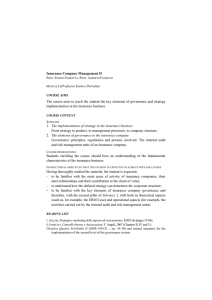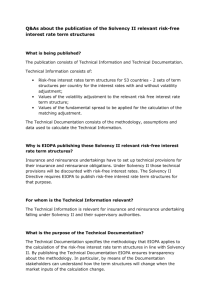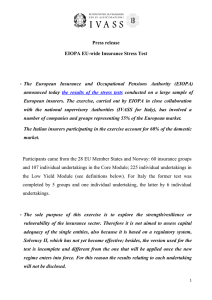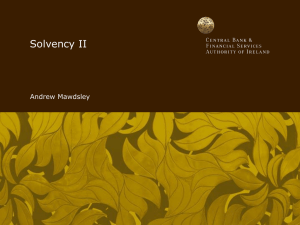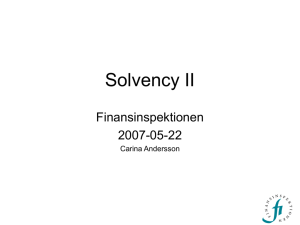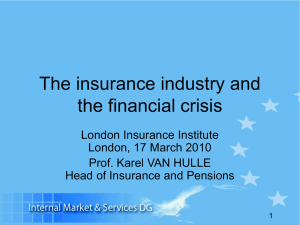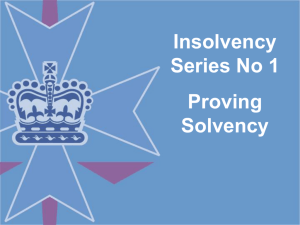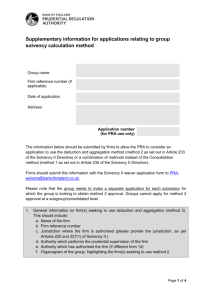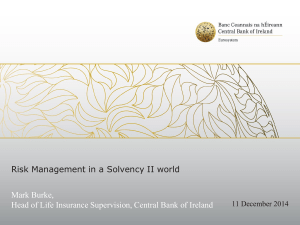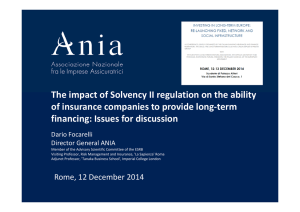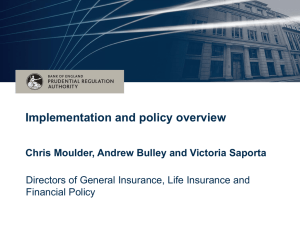Overview of the Legislative Process - Solvency II Forum
advertisement
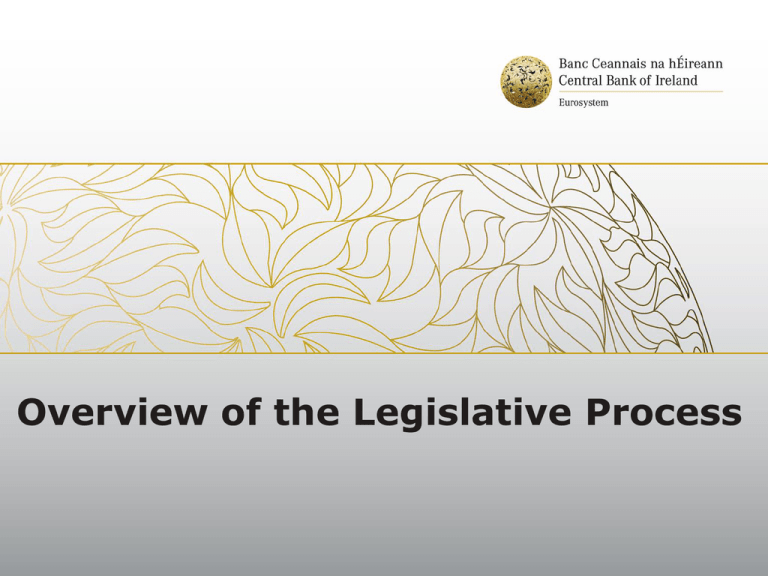
Overview of the Legislative Process Purpose of Presentation Provide brief overview of EU insurance legislative background Rationale for why Solvency II is being introduced Overview of Solvency II legislative process Where we are now and what lies ahead Ist EU Directives 1st EU non-life and life Directives introduced in the 1970s Developed and refined through the 80s, and 90s culminating on the Life side with consolidated Life Directive in 2002 Transposed into Irish law e.g. SI 359 of 1994 on non-life side and SI 360 of 1994 on Life side Problems with old regime (1) Old regime has served its purpose reasonably well Muller Report in 1997 indicated however that solvency requirements did not reflect the risks facing the modern insurance industry This resulted in introduction of Solvency 1 requirements Always seen as an interim step Problems with old regime (2) – – – – the existing system does not enable the accurate and timely identification by supervisors of problems and their root causes which could lead to insolvency. risk management is not incentivised under the current regime. the lack of consistency across the EU in solvency and regulatory requirements. Governance issues Governance shortcomings a reason for Solvency II Sharma Report 2002- one of the main triggers for non financial measures in Solvency II Main Findings of report: Majority of insolvencies preceded by governance type shortcomings Reduce dependence on capital requirements as the only early warning signal by supplementing it with qualitative measures such as governance and public disclosure Solvency II Legislative process Lamfalussy Process Level 1: The Directive – Joint decision of the Council of Ministers and the European Parliament Level 2: Delegated acts – Responsibility of the Commission, based on the advice of EIOPA (but influence of Finance Ministries) Level 3: Guidelines and implementing acts – Responsibility of EIOPA Level 4: Enforcement – Responsibility of Commission; ensure all Member States have implemented fully / correctly What is purpose of Solvency II Key aspect of Solvency II is to put in place a regime which has (i) risk based capital requirements (Pillar 1) (ii) complemented by relevant non-financial measures (Pillar 2) and which (iii) enables as much transparency as possible through public reporting requirements (Pillar 3) It also consolidates Insurance Directives Pillar 1 elements of Solvency II Technical provisions Own Funds Solvency Capital requirement Minimum Capital Requirement Prudent Person Principal Group Supervision Pillar 2 & Pillar 3 elements of Solvency II Principles of Supervision Governance Requirements sets out a series of general framework principles Public Disclosure Level 2 Delegated Acts Fleshes out Level 1 Directive CEIOPS advice provided starting point for this work Ongoing engagement with industry both at local and European level Commission working group comprised of Ministries of Finance and technical experts have formulated draft text Council and Parliament will have a period time to consider these Delegated Acts Will be implemented as Regulations Further points to note Proportionality Solvency II Efforts is a key feature of been made to reduce complexity Simplifications When does Solvency II come into force 1 January 2013 Transitionals An aspect of Level 2 measures are transitionals This area is still being worked upon General acceptance that transitionals are necessary in areas such as (1) Own funds – hybrid capital (2) Reporting/Public Disclosure (3) Third country equivalence Proposals for transitionals in other areas however no agreement on this issues yet and much resistance to some of the proposals. Simplest message for the moment is work towards implementation on the basis that transitionals will be kept to a minimum: otherwise you may find yourself not sufficiently ready on 1 Jan 2013 Purpose of Omnibus II Change the date of entry into force of Solvency II To facilitate the making of implementing technical standards To facilitate the settlement of disagreements Specific tasks for EIOPA Lisbonisation of Solvency II Directive Transitionals Transposition of Solvency II Currently working on the transposition project Maximum harmonisation regime so little scope for discretion Will consult with industry Large exercise: would hope to have it completed by Oct/Nov next year Questions?
